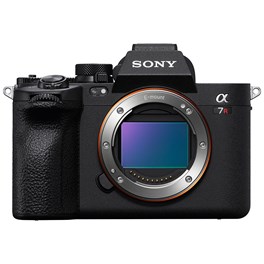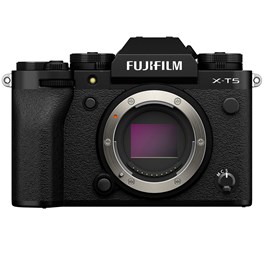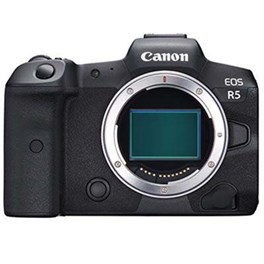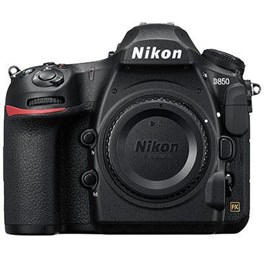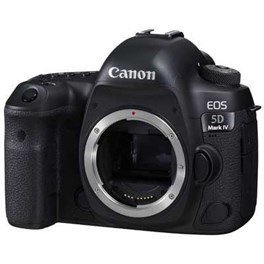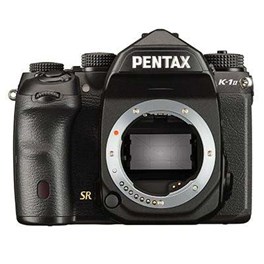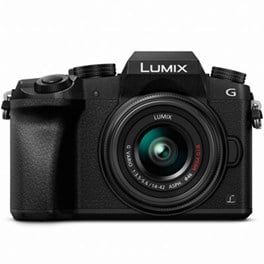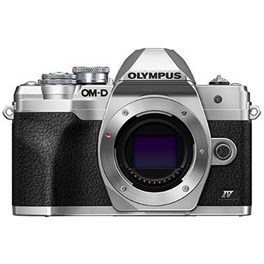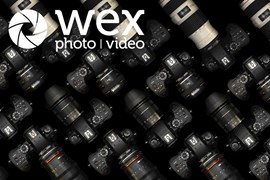
The best cameras for landscapes will enable you to show off the natural world in all its glory. Landscape photography is one of the oldest genres of photography, and is still hugely popular today, with dazzling images regularly topping the lists of popular competitions.
While any camera can be used to shoot landscapes, if you do a little research and pick out a camera that’s especially suited for it, you’ll find a host of interesting creative options open up for you. For our money, the below are they key specs to keep an eye on when picking your landscape camera:
Resolution - Megapixel counts aren’t always as important as some photographers like to make out, but with that said, in landscapes it pays to have a decent amount of resolution in your pocket. Having more pixels in your images means it’s possible to make them into larger, higher-quality prints, and printing is often a big part of landscape photography – competition-winning images are often printed to be exhibited.
Sensor size - Different sensor sizes have different advantages, but large sensors are especially suited to landscape photography for two reasons. One, larger sensors provide greater dynamic range (the range of lightest to darkest tones in an image), opening up your options in low light. And second, landscape photography often requires a wide-angle perspective, and smaller sensors incur a crop factor on lenses that narrows their field of view (see our Photography Jargon Buster if you need an explainer on how this works).
Lens selection - We’ve stuck to interchangeable-lens cameras for this guide, as landscape shooters generally need more options than a fixed-lens camera can provide. When picking your camera for landscape, it’s worth looking at the lens selection, focusing in particular on whether there are some good, sharp wide-angles in your price range. See our guide to the best lenses for landscapes for some more suggestions.
We’ve picked out great landscape cameras from all the major manufacturers, and have included some budget-friendly options as well as premium options. No matter your skill level, there should be a great landscape camera for you – click the quick links below to jump straight to specific sections.
Quick Navigation
Best Mirrorless Camera for Landscapes
If you’re looking for the best camera on the market for pretty much anything in 2023, you’re almost certainly looking for a mirrorless camera. Almost all the major manufacturers now produce their flagship professional and enthusiast cameras in mirrorless format, and this is the area where all the most exciting developments in camera tech are happening. This is especially true for mirrorless landscape cameras.
With ultra-high resolution sensors and the latest computational photography features, the best mirrorless cameras for landscapes are some seriously capable bits of kit. We’ve restricted ourselves to just three exceptional choices, but there are a lot of cameras that could have made this list, and we’ve suggested a few cheaper alternatives in case these models are a little out of your price range (check out our best budget landscape cameras section for more cheap options). No more time to waste – let’s get into it.
Sony A7R V Digital Camera Body
Building on the A7R IV, the Sony A7R V sports the same powerful features and adds some new ones. The A7R V captures stunning 61MP photos as well as amazing 8K video. Thanks to the BIONZ XR processor, AI realtime autofocus with 693 phase-detection points means fast-moving subjects will always be rich with detail. With smart video and design features, the A7R V sets a new high bar in the A7 series.
£2,849.00 inc. Cashback View
Pros:
- Stunning 61MP images
- Pixel-Shift mode can bump this up to 240MP
- Excellent lens selection
Cons:
- Same sensor as cheaper A7R IVA
- Pixel-Shift can’t be completed in camera
The A7R cameras have always been the resolution specialists of the Sony mirrorless family, and the A7R V is the most accomplished camera in the series yet. It’s built around a 61MP sensor that’s among the highest-resolution full-frame sensors you can get right now – only the Sigma fp L and Leica M11 have it matched, and neither beats it. The A7R V is capable of capturing simply stunning images in all conditions – while all those pixels mean it’s at its best in good light, it still does well when conditions get dim.
As a recent camera, the A7R V can take advantage of modern computational photography features to push things still further. Engage the Pixel-Shift multi-shot mode and you can produce stitched images up to 240MP in resolution, and Sony’s software will use AI to cleverly correct for microscopic camera movements (though you’ll need desktop software to complete the final product). With a fantastic selection of E-mount lenses, the A7R V is one of the best possible choices for landscape photographers – though if it’s out of your budget, the cheaper A7R IVA also sports a 61MP sensor.
Fujifilm X-T5 Digital Camera Body - Black
Fujifilm’s X-T5 Digital Camera Body is a step above from the X-T4 that is more akin with the flagship X-H2 camera. Capture stunning images with the 40MP X-Trans CMOS sensor and powerful X-Processor 5. For videographers, the camera can capture gorgeous 6.2K, 10-bit 4:2:2 video and externally record Apple and Blackmagic RAW codecs. With ease-of-use features too, this is a small but mighty camera.
£1,449.00 View
Pros:
- Gorgeous JPEG quality
- Big resolution upgrade over X-T4
- Tons of terrific lenses
Cons:
- Not full-frame
- Screen not fully articulating
Fujifilm stuck with the same 26.1MP sensor for quite a few iterations of its flagship X-T camera line, so it was a welcome development to see the flagship X-T5 arrive in all its 40MP glory. If you like tactile, dial-based control and rugged cameras that hearken back to a classic era of manual photography, you’re going to be in absolute heaven with the Fujifilm X-T5. It produces gorgeous, punchy, vivid images in both RAW and JPEG format, which is great for those who don’t want to spend too much time editing. Furthermore, the X-mount lens range has loads of brilliant sharp optics, not only from Fujifilm but also from third-party manufacturers like Sigma and Tamron.
It’s not a full-frame camera, but the Fujifilm X-T5 makes a compelling argument for the viability of the APS-C sensor for enthusiast and professional photographers. It’s difficult to think of a reason a landscape photographer would have any reason to be disappointed with this camera.
Canon EOS R5 Digital Camera Body
Free 3LT Tripod worth £300
Truly shaking up the market, the Canon EOS R5 is packed with new technology and major improvements that sets it aside from its competitors. The Canon R body has been designed for professional photographers and videographers alike, allowing you to elevate your practice to the next level. It's been equipped with an all-new 45MP CMOS Image Sensor & DIGIC X Processor that is capable of incredibly detailed 45MP stills and 8K video footage. Combining Canon's Dual Pixel CMOS AF system and a blisteringly fast 20fps mechanical shutter, you'll be able to accurately capture every moment of the action with precision. Then, there is a game-changing new addition which is a Canon first: The R5 is the very first Canon camera body to feature a 5-Axis IBIS system that is compatible with the RF and EF optically stabilised lenses; producing shake-free and smooth video footage. It's a true marvel of the photographic world.
£2,999.00 View
Pros:
- Gorgeous full-frame image quality
- Exceptional in-body image stabilisation
- Lovely high-res viewfinder
Cons:
- Video recording limits
The EOS R5 is one of the finest stills cameras that Canon has ever created, and landscape photographers are absolutely spoiled by its feature-set. Capable of capturing 45MP stills in full-frame quality, the EOS R5 delivers photographs of absolutely dazzling detail and colour rendition. The dynamic range is excellent, the noise performance very good even at high ISO settings, and the in-body image stabilisation is still some of the best you can get for your money.
With the RF-mount lens range expanding at a pace, Canon’s EOS R mirrorless series offers a seriously compelling proposition for landscape shooters. Also, if you’ve been using DSLRs for a while and are reluctant to make the switch, Canon’s EF-EOS R lens mount adapter lets you use all your old EF-mount glass with full functionality – and some of the newer adapters have useful landscape filters like polarizers and variable ND filters already built in!
Best DSLR Camera for Landscapes
Photographers have been using DSLRs to capture exemplary landscape images for decades now, and if this is the route you want to go down, you’re in good company. DSLRs have many advantages of their own for landscape shooters – they tend to be built tough, with solid weather-sealed bodies that can stand up to some inclement conditions. While DSLRs are often heavier than mirrorless bodies, the fact that the systems have been going longer means you’ll generally have a lot of lenses to choose from.
The big three players in the DSLR world are Canon, Nikon and Pentax, and all three produce cameras that are perfectly suited to landscape shooting. We’ve picked out a few of our full-frame favourites, many of which can be picked up for a cheaper outlay than they were upon their original launch. However, if they’re still out of your budget, all three manufacturers produce excellent APS-C DSLRs that are more affordable.
Nikon D850 Digital SLR Camera Body
Save £250, was £3249
Introducing, the Nikon D850, a photographic workhorse that has been equipped with a huge 45.7 megapixel sensor that will not disappoint. The 45.7 megapixel back-illuminated, full-frame CMOS sensor and extended battery life will keep up with all any photographic adventure you can throw its way, from the studio photo shoots to the remotest places on Earth. The tough and rugged magnesium-alloy build and all-weather sealing allow you to take its power wherever you want to go. The stunning image quality and impressive performance of this camera makes it the ultimate choice and will continue to be a game changer for years to come.
£2,299.00 View
Pros:
- Extremely tough magnesium-alloy body
- Exceptionally good battery life
- Sublime image quality
Cons:
- Fast card slot XQD, not CFExpress
- A big, bulky camera
One of the finest DSLRs ever made? Nikon’s D850 certainly has a claim to the title. This full-frame beast isn’t a small camera by any means, but its 45.7MP full-frame sensor produces absolutely dazzling images that will print beautifully, and it’s more than capable of capturing landscapes of all types. The magnesium-alloy body of the D850 is weather-sealed and hardy, and you also have the huge selection of F-mount lenses to play with, giving you a nicely broad suite of options.
The D850 really leans into a lot of the natural advantages of DSLRs – for instance, while it lacks the USB charging you get in a lot of newer mirrorless models, its EN-EL15a lithium-ion battery is rated to last at least 1,840 shots. Pack a couple of those and it’s very unlikely you’ll find yourself running out. The D850 is a camera that nails the shots in all conditions, and even coming up to six years after its release, is one of the best cameras for landscape enthusiasts.
Canon EOS 5D Mark IV Digital SLR Camera Body
The Canon EOS 5D Mark IV Digital SLR Camera Body offers a 30-megapixel CMOS sensor with a maximum ISO sensitivity of 32,000, and an expanded 61-point AF-system. Capture magnificent detail even in the toughest conditions as the camera body features a weather-resistant design. Users can enjoy beautiful 4K video recording at 30 fps; whereas, HD video can be captured at 120 fps when trying to achieve a slow-motion effect. In addition to this, WiFi and NFC connectivity are also available allowing for easy file transfer and more.
£2,489.00 View
Pros:
- Built to handle tough conditions
- Highly accurate metering sensor
- Quality stays great at high ISOs
Cons:
- Vicious crop on 4K video
- Lower resolution than rivals
The Canon EOS 5D DSLR series may be most famous for kickstarting a revolution in video, but the EOS 5D Mark IV is also an excellent camera for stills, and landscapes in particular. Its full-frame sensor sports a resolution of 30.4MP, which is a little lower than a lot of the others we’ve seen on this list. However, the EOS 5D Mark IV excels at delivering top-quality images in all sorts of conditions – its performance throughout its ISO range is excellent, meaning you don’t need to be afraid to push it when the light gets low. Furthermore, the 150,000-pixel RGB+IR metering sensor really impresses, delivering highly accurate exposures time and again.
The EOS 5D Mark IV is tough enough to handle challenging weather conditions, with Canon having added plenty of extra seals since the EOS 5D Mark III. With all the fantastic landscape lenses out there for Canon EF mount, you should have no trouble at all putting together a killer setup for getting top-quality landscape shots.
Pentax K-1 Mark II Digital SLR Camera Body
The Pentax K-1 Mark II is a powerful DSLR camera body that features a 36.4-megapixel full-frame CMOS sensor, Prime IV image-processing engine and an impressive Dynamic Pixel Shift Resolution System. The body is weather-sealed and comes without an anti-aliasing filter that in turn priorities image quality. It also features an improved ISO range of up to 819,200 that is improves on this flagship camera's low-light capability and of course, this is compatible with the excellent range of Pentax K mount lenses.
£1,469.00 View
Pros:
- Excellent weather sealing
- Pixel-Shift mode works straight out of camera
- Max ISO of 819,200
Cons:
- Fewer lens options than Canon/Nikon
- AF and burst systems quite dated
The Pentax K-1 Mark II is Pentax’s flagship full-frame DSLR, and it is unashamedly that – a throwback camera in an era increasingly dominated by mirrorless. If you enjoy rugged DSLR weatherproofing, big optical viewfinders and cameras that let you get a good solid grip, you’re going to find a lot to like here.
With its full-frame 36.4MP CMOS sensor, the K-1 Mark II is certainly no lightweight when it comes to imaging performance. It also has several Pixel-Shift multi-shot modes that allow you to boost the resolution – including a JPEG mode that can assemble the image straight out of camera. If you like shooting the stars, the clever Astrotracer mode combines sensor-shift technology with GPS to produce long-exposures of the night sky without any star streaks. While its burst-shooting and AF systems look quite dated next to Canon and Nikon rivals, this isn’t too much of a bother for landscape photographers, making the K-1 Mark II a very compelling alternative indeed.
Best Medium Format Camera for Landscapes
Medium format sensors are even larger than full-frame. For those who love images full of depth and detail, these larger chips can’t be beaten, and while they used to be too unwieldy and expensive for most people to use, recent disruptions in the market have changed the game somewhat. Thanks to innovations by Fujifilm and Hasselblad, mirrorless medium format cameras are more affordable and portable than they have ever been, and this means more and more landscape photographers can take advantage of that distinctive, impossible-to-replicate medium format ‘look’.
These newer medium format systems are going from strength to strength, and while they may or may not make the leap to becoming truly mainstream, it’s an exciting time to hop on board. We’ve picked out a couple of our recent favourites for this section – if you like big pixel counts, you’ll be right at home.
Pros:
- Dazzling image quality throughout ISO range
- Whopping 100MP resolution
- Impressively portable body
Cons:
- AF performance sometimes lacking
- You’ll want a spare battery
In terms of sheer image quality, the Fujifilm GFX 100S is an incredible achievement. In times gone by, getting resolution and detail at this level would have cost you a five-figure price tag, and while the GFX 100S isn’t what you’d call a cheap camera, it’s so much more affordable and accessible than what has come before. Delivering 102MP of resolution in a body that weighs just 900g, the GFX 100S can capture pin-sharp images hand-held. This is aided by the revamped in-body image stabilisation system, which helps you make the most of all those pixels without necessarily needing a tripod.
The Fujifilm GFX lens range offers a selection of optics specifically designed to get the most out of that big sensor. Autofocus speeds aren’t as fast as you’d get from full-frame or APS-C cameras, but this isn’t a big concern in landscape – precisely the genre in which this camera is built to excel.
Pros:
- Gorgeous 16-bit RAW images
- Very impressive dynamic range
- Great touchscreen and EVF
Cons:
- A little slow in operation
Hasselblad’s 50MP medium-format camera delivers distinctive images with breathtaking depth. Its 16-bit RAW files with around 14 stops of dynamic range are unmistakable in their sheer scale and quality. Pair the camera with one of Hasselblad’s larger-aperture XCD lenses, and you’ll be able to appreciate the razor-thin depth of field that’s possible with this camera. Dual fast UHS-II SD slots are included to handle the large volumes of data you’ll be chugging through, and we are also particularly impressed by the high-quality electronic viewfinder and touchscreen that make the X1D II 50C a satisfying handling experience.
It’s not the fastest camera in operation, even by medium-format standards, and you shouldn’t hold out much hope for quick autofocusing. But landscapes aren’t known for running away from the lens, and once again, the strengths of the Hasselblad X1D II 50C play right into the needs of landscape shooting. If you have a bigger budget and want more pixels, you may also want to consider the recently released Hasselblad X2D 100C.
Best Budget Camera for Landscapes
Not everyone has the money for medium-format and full-frame professional cameras. Landscape photography doesn't have to be an expensive pursuit, and if you’re looking to get started shooting landscapes on a modest budget, here are some suggestions for cameras to try.
One of the best ways to save money on new cameras is to look at models from a couple of generations previous. Many manufacturers keep older cameras in production long after newer ones have nominally replaced them, and this can be a fantastic way to get a discount on a camera’s original retail price. It can also be worth doing some planning ahead, e.g. buying a cheaper camera in a system that also offers some premium, higher-end models, so you have an easy path to take when you get the itch to upgrade.
Here are our picks for the best budget landscape cameras.
Panasonic LUMIX DMC-G7 Digital Camera with 14-42mm Lens
The Panasonic LUMIX DMC-G7 combines stunning 4K (30p/24p) video, high resolution stills and a variety of practical new enhancements to help anyone capture the perfect image. Ideal for the aspiring photographer wanting to take their photography to the next level, the 16-megapixel Panasonic G7 is designed for ease-of-use without compromising on performance. The camera brings a variety of standout features including a built-in 2,360,-dot OLED viewfinder, 3.0" 1.04m-dot resolution free-angle touch screen display, improved autofocus, 8 fps burst shooting, Wi-Fi connectivity and a new 4K Photo mode that allows you to extract 8-megapixel stills from the 4K footage in-camera so that you never miss a moment.
£499.00 View
Pros:
- A great camera and lens for less than £450
- Electronic viewfinder
- Lightweight and portable
Cons:
- Smaller sensor
- Only 16MP
While it doesn’t come anywhere close to the dizzying resolution highs of other cameras on this list, the Panasonic Lumix G7 is a tidy little mirrorless camera that will work great as anyone’s first landscape camera. The price is right too, with its £449 price including both the G7 itself and a 14-42mm lens.
The 16MP sensor on the Lumix G7 works in tandem with the Venus Engine processor to deliver images full of colour and clarity – and 16MP is still a perfectly fine resolution for making a decent-size print at 300dpi. The Micro Four Thirds sensor is smaller than you’d find on other cameras, which does impact the dynamic range of images and also incurs a 2x crop factor on lenses, limiting your choice of wide-angles. However, there are still great landscape lenses for the system – we included a few in our guide to the best landscape lenses.
Olympus OM-D E-M10 Mark IV Digital Camera Body - Silver
The Olympus OM-D E-M10 Mark IV is a compact, lightweight and impressive camera body that is designed with travelling and mobile creatives in mind. It features a redesigned grip, faster and more precise AF, and powerful 5-axis image stabilisation which together allow you to have a steady hand and be able to capture the action in front of you in stunning detail without camera-shake. It comes with a useful flip-down LCD monitor which makes for well-composed selfies and vlogs. Equally, it has a high-definition EVF that provides you with real-time settings and a crystal clear image.
£649.00 View
Pros:
- Easy-to-use for beginners
- Live Composite mode for long exposures
- Solid 20.3MP resolution
Cons:
- Smaller MFT sensor
- Plasticky construction
While it’s one of our favourite beginner cameras of all time, the Olympus OM-D E-M10 Mark IV sports a number of easy-to-use but advanced features that make it excellent for landscape photography. We particularly like the Live Composite feature – this allows you to create long exposure images and monitor their progress on the LCD in real time.
With 20.3MP of resolution, the E-M10 IV offers a bit more pixel power than the Lumix G7, though it uses the same sensor and lens mount. It has a plastic body, rather than the heavier metallic construction of the premium DSLRs we’ve seen in previous sections, and while this does mean it’s a bit less tough, it also makes the E-M10 Mark IV incredibly light and portable – which is great if you’re planning to take it on some landscape-focused hikes. We also love the 5-axis stabilisation built into the camera, which makes it much easier to get sharp shots hand-held.
Pros:
- One of the cheapest full-frame cameras
- Relatively lightweight
- Powerful 5-axis stabilisation
Cons:
- No 4K
- 24MP starting to look dated
Proof that full-frame quality doesn’t have to cost the earth, the Sony A7 II is a sublime mirrorless camera that’s available for less than £900. This was the first full-frame camera to sport 5-axis image stabilisation, a feature that has since become so standard as to be expected, and it delivers the goods on this camera, enabling the use of slower shutter speeds without incurring image blur due to camera shake.
The 24MP on the Sony A7 II will very much do the job for printing – it’s not a patch on the resolutions we’ve seen from subsequent cameras, but let’s not lose perspective, it’s still plenty of pixels. Video users will note that the A7 II pre-dates the 4K boom, and so tops out at Full HD. If you’re a pure landscape photographer this obviously won’t bother you, but it’s worth bearing in mind if you do like to mix video in with your stills.

FAQs
What kind of camera is best for landscape photography?
Generally, a camera with a high-resolution sensor and a wide-angle lens is best for landscape photography. Many professional landscape photographers prefer full-frame cameras because they provide better image quality and low-light performance, as well as more versatility when editing.
What are the best settings for landscape photography?
This depends on the lighting conditions and the desired outcome. Generally, you'll want to use a small aperture (high f-number) to get a larger depth of field, a low ISO to reduce noise, and a slower shutter speed to capture movement and create a sense of motion.
How do I compose a good landscape photograph?
You should consider the rule of thirds, which divides the image into thirds both horizontally and vertically. Place the main subject in one of the intersections of these lines to create a balanced and aesthetically pleasing composition.
What accessories are essential for landscape photography?
Essential accessories for landscape photography include a sturdy tripod to stabilise the camera, a polarising filter to reduce glare and increase contrast, and a remote shutter release to prevent camera shake. Additionally, a backpack to carry your equipment and extra batteries and memory cards is a good idea.
What post-processing techniques can I use to enhance my landscape photos?
Adjusting the exposure, contrast, saturation, and white balance can help enhance the colours and details in your landscape photos. You can also use tools like cloning and healing to remove distractions or add a vignette to draw attention to the main subject. However, be careful not to over-edit your images and maintain a natural-looking result.
How can I protect my camera equipment while shooting landscapes?
Protect your camera equipment from dust, moisture, and impact by using a camera rain cover, a camera bag with padded dividers, and a protective UV filter for your lens. Additionally, keep a microfiber cloth handy to wipe off any debris or moisture that may come in contact with your lens or camera body.
Browse our full range of camera
How do we decide?
Our in-house photography experts, store staff and partners all work collaboratively to pour over our guides and tips articles. We also consider emerging trends and customer feedback to make sure our guides are always up-to-date and reflective of what people are truly looking for. By curating only the best products, our guides provide trustworthy recommendations, making it easier for customers to make informed choices with confidence.
If you would like more advice on any purchase our contact centre staff are here to help. Alternatively, you can reach us via email or social media. And don't forget. If you were to purchase anything based on our recommendations you'll be covered by our full returns policy
Buying Guides
